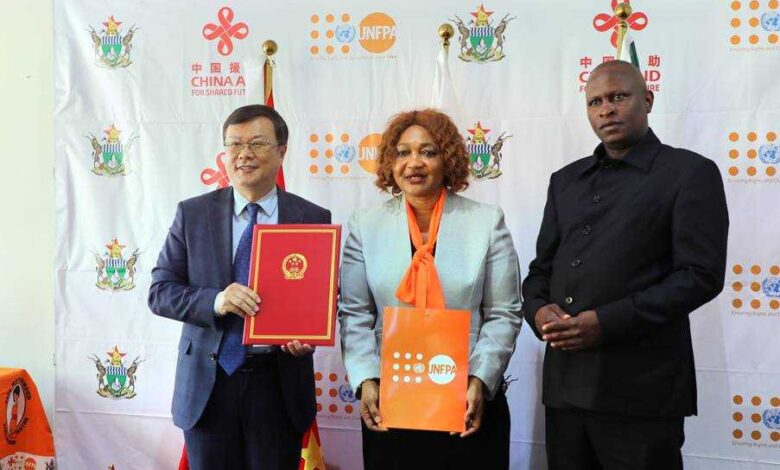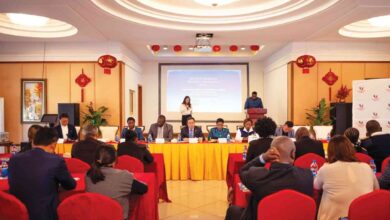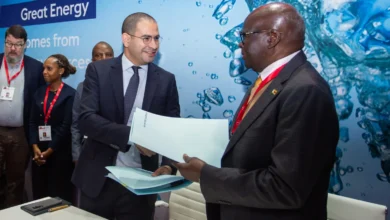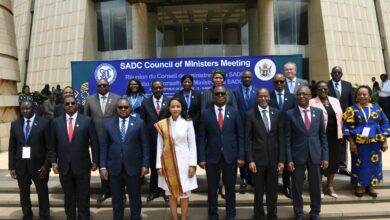China and Zimbabwe Celebrate Life-Saving Health Project in Cyclone-Devastated Regions

Chinese Ambassador to Zimbabwe, H.E. Zhou Ding, joined Zimbabwean officials and health stakeholders in celebrating the successful completion of a vital health intervention that has saved lives and strengthened healthcare systems in communities affected by Cyclone Idai.
The event, held at the UNFPA boardroom in Harare, marked the signing of the Certificate of Completion for the “Health Assistance Project for Women and Girls Affected by Tropical Cyclone Idai in Zimbabwe.” Representing the Zimbabwean government was Deputy Minister of Health and Child Care, Dr. Sleiman Kwidini.
Ambassador Zhou underscored the significance of the project, describing it as a shining example of effective tripartite cooperation among China, the United Nations Population Fund (UNFPA), and the Zimbabwean government.
“This project stands as a shining example of successful tripartite cooperation. It has proved that collective action and solidarity are the most powerful tools in overcoming challenges,” said Ambassador Zhou.
Funded by the China South-South Cooperation Assistance Fund, the US$1.24 million initiative was implemented by UNFPA in collaboration with Zimbabwe’s Ministry of Health and Child Care. It specifically targeted communities in Chimanimani and Chipinge, districts that bore the brunt of Cyclone Idai’s devastation in 2019. With healthcare infrastructure severely damaged, pregnant women and girls were left especially vulnerable.
The impact of the project has been profound. Over 60,000 life-saving delivery services were provided to expectant mothers in the affected areas. Three maternity waiting homes were refurbished at Mutambara Mission Hospital, Chipinge District Hospital, and Birchenough Bridge District Hospital—critical facilities that now offer safer, more accessible maternal healthcare.
Additionally, nearly 300 healthcare workers received training in emergency obstetric and neonatal care, equipping them to manage complications such as postpartum hemorrhage. Ambassador Zhou emphasized that these interventions were more than just numbers—they represented lives saved and communities empowered.
He also placed the initiative within the broader context of China and Zimbabwe’s decades-long health partnership, which began in the 1980s. Over the years, China has deployed 22 medical teams comprising more than 200 experts, constructed major hospitals such as Chinhoyi Provincial Hospital and Mahusekwa Hospital, and provided 17 million COVID-19 vaccine doses, among other forms of support. Projects like the Bright Journey Programme have also helped restore sight to over 1,400 cataract patients.
Dr. Kwidini highlighted the project’s alignment with Zimbabwe’s National Development Strategy 1 and praised its contribution to lowering maternal mortality. He noted that Zimbabwe’s maternal mortality rate had dropped from 462 deaths per 100,000 live births in 2019 to 362 in 2022, attributing the decline in part to impactful health initiatives like this one.
The event brought several key messages to the fore. The project is a compelling case study of effective cooperation between donor countries, UN agencies, and host governments. It directly addressed critical healthcare needs in cyclone-hit areas, while also building long-term resilience through infrastructure development and health worker training. Furthermore, it showcased the practical impact of China and Zimbabwe’s comprehensive strategic partnership.
Both Ambassador Zhou and UNFPA Representative Mrs. Miranda Tabifor stated that this project’s conclusion is not the end, but a stepping stone toward future collaboration. It provides a blueprint for scaled-up South-South cooperation aimed at achieving universal reproductive healthcare and eliminating preventable maternal deaths in Zimbabwe.
The successful wrap-up of the Health Assistance Project stands not only as a milestone in post-cyclone recovery, but also as a testament to what meaningful partnerships can achieve in advancing public health and strengthening healthcare systems for generations to come.




